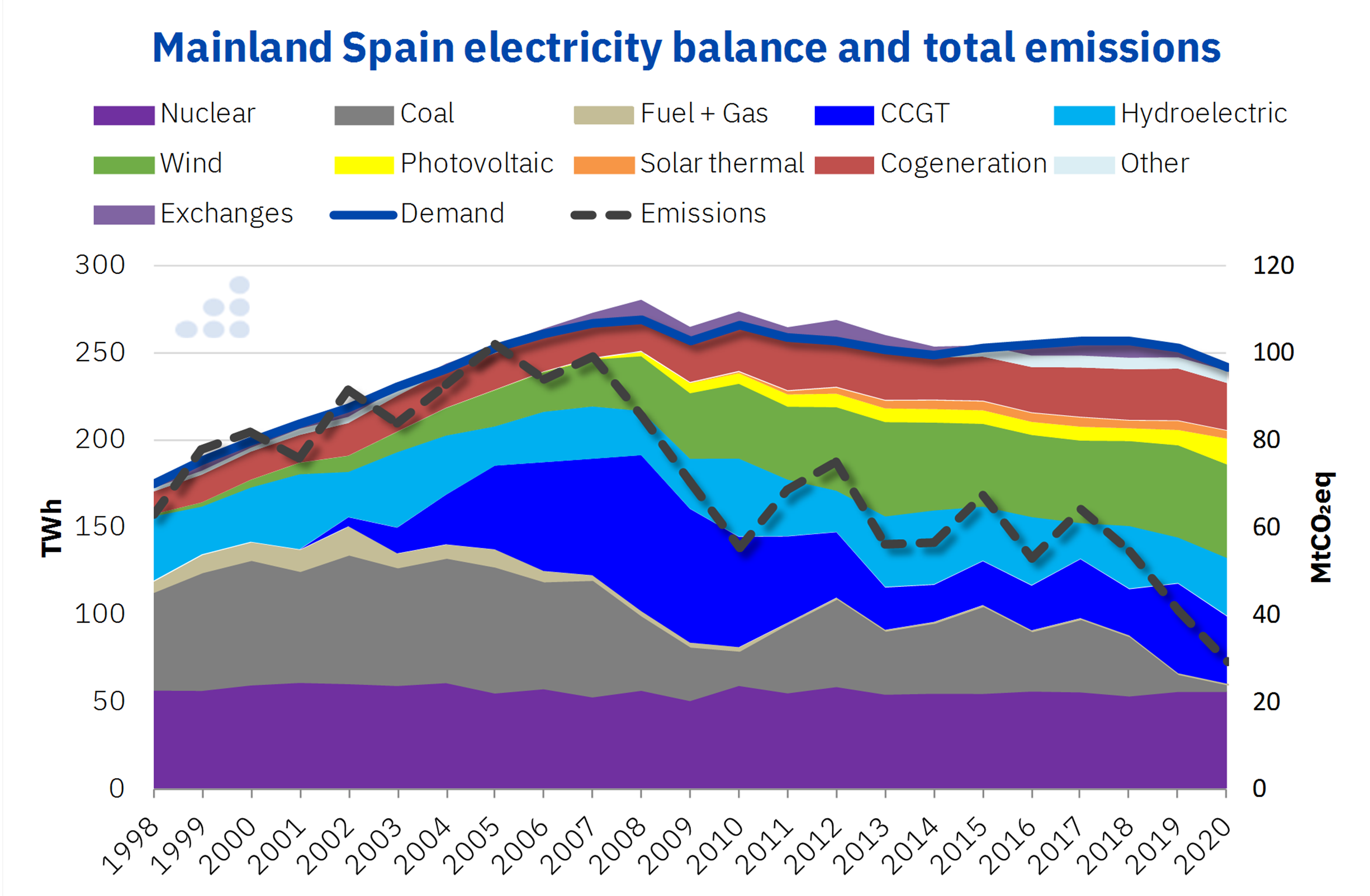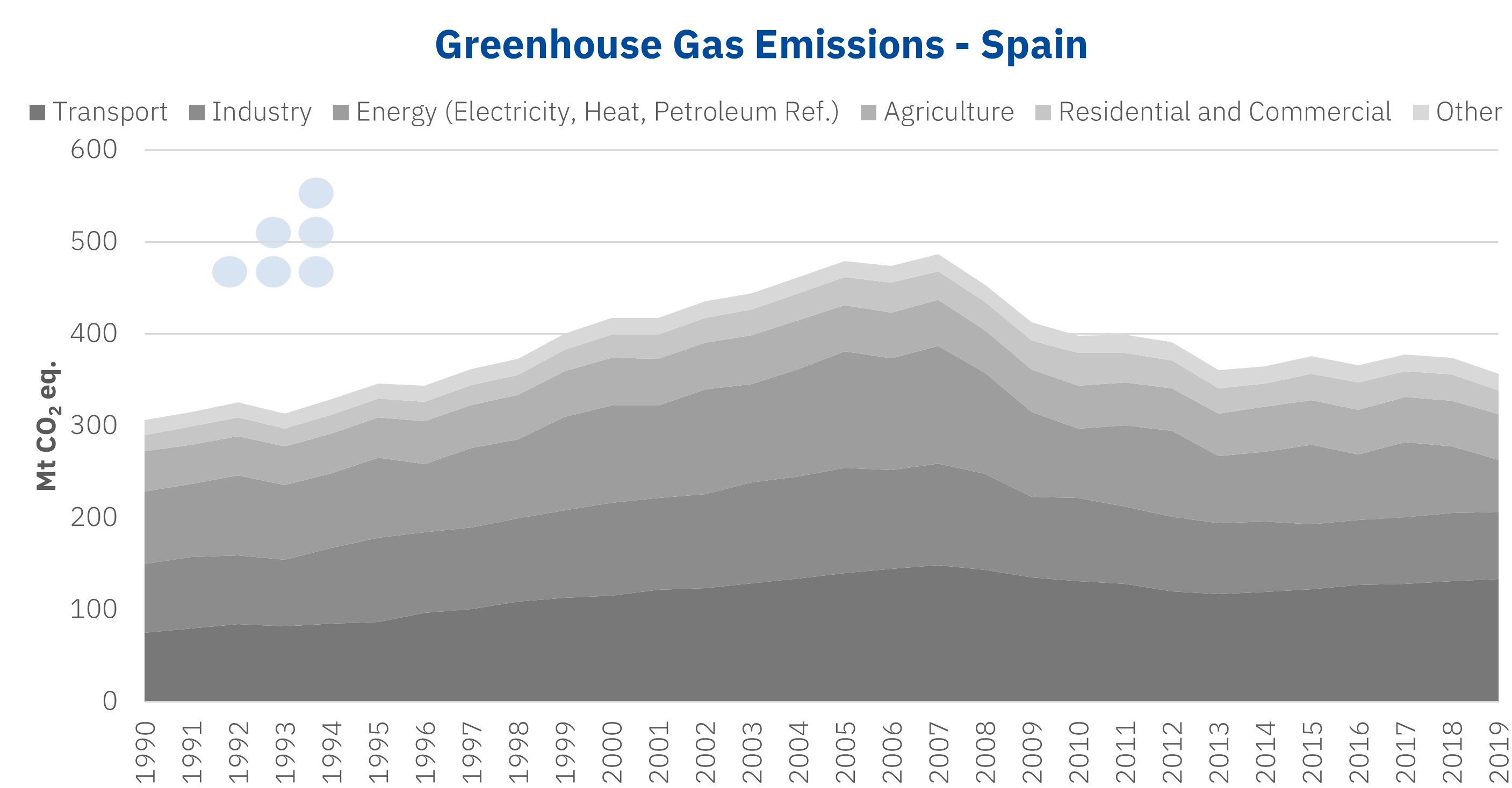AleaSoft Energy Forecasting, October 29, 2021. COP26 will show that progress is not being made fast enough in reducing greenhouse gas emissions. The energy sector historically was one of the largest contributors to these emissions, but right now it is the sector that is making the fastest progress in reducing them and it has a clear and agreed path towards complete decarbonisation. The focus should be on other highly polluting sectors such as industry and transport.
Between October 31 and November 12, the 26th edition of the United Nations Conference on Climate Change (COP26) will take place in Glasgow, where leaders of 197 countries will try to reach agreements to fight against climate change. Only some countries have begun to take concrete steps in this fight and scientists consider that, even if all countries fulfil the commitments already established, these will not be enough to stop global warming.
They want to review the objectives of CO2 and greenhouse gas emissions reduction to try to meet the objectives of the Paris Agreement of 2015 to limit the increase in global temperature to just 1.5 °C, and next decade will be key to achieve this milestone.
The energy sector and the emissions reduction
The energy sector is often in the limelight when it comes to reducing greenhouse gas emissions. No wonder, this sector accounts for 75% of emissions in the European Union. But it is also the sector in which the path to decarbonisation is clearer and more marked. The Fit for 55 plan establishes the objective of the 40% quota for renewable energies in 2030.
Furthermore, the energy sector is one of the sectors where emissions fell the most in recent decades. In the case of Spain, emissions from electricity generation fell considerably, by 64% between 2000 and 2020, and coal energy production practically disappeared from the mix.
 Source: Prepared by AleaSoft Energy Forecasting using data from REE.
Source: Prepared by AleaSoft Energy Forecasting using data from REE.
 Source: Prepared by AleaSoft Energy Forecasting using data from REE.
Source: Prepared by AleaSoft Energy Forecasting using data from REE.
Other sectors to focus on
Obviously, there is still a long way to go in the energy sector and it is necessary to continue to support the installation of new renewable energy capacity in the coming years to continue reducing emissions in this sector. But, right now, the focus should be on the decarbonisation of industry and transport.
 Source: Prepared by AleaSoft Energy Forecasting using data from the EEA.
Source: Prepared by AleaSoft Energy Forecasting using data from the EEA.
 Source: Prepared by AleaSoft Energy Forecasting using data from the EEA.
Source: Prepared by AleaSoft Energy Forecasting using data from the EEA.
A key element in the decarbonisation of these sectors is green hydrogen. Hydrogen is destined to be the fuel of the future, replacing fossil fuels in multiple applications in heating, industrial heat, and heavy and long‑distance transport, among many others. The development of green hydrogen production will also be important in the development of renewable energies. Its production will stop the cannibalisation of electricity markets prices and will largely avoid the renewable energies curtailments.
AleaSoft’s analysis on the prospects for energy markets in Europe
In the energy transition a great effort in investments will be needed to carry out all the policies that are needed. When investing in the development of new renewable energy projects, it is necessary to have long‑term forecasts with hourly temporality that allow quantifying the return on investment in the financial model.
The renewable energy projects financing will be one of the topics that will be analysed in the next AleaSoft Energy Forecasting’s webinar that will be held on November 11. The webinar will feature the participation of guest speakers from Engie Spain and the evolution of the markets in this global energy crisis will also be analysed.
Source: AleaSoft Energy Forecasting.

